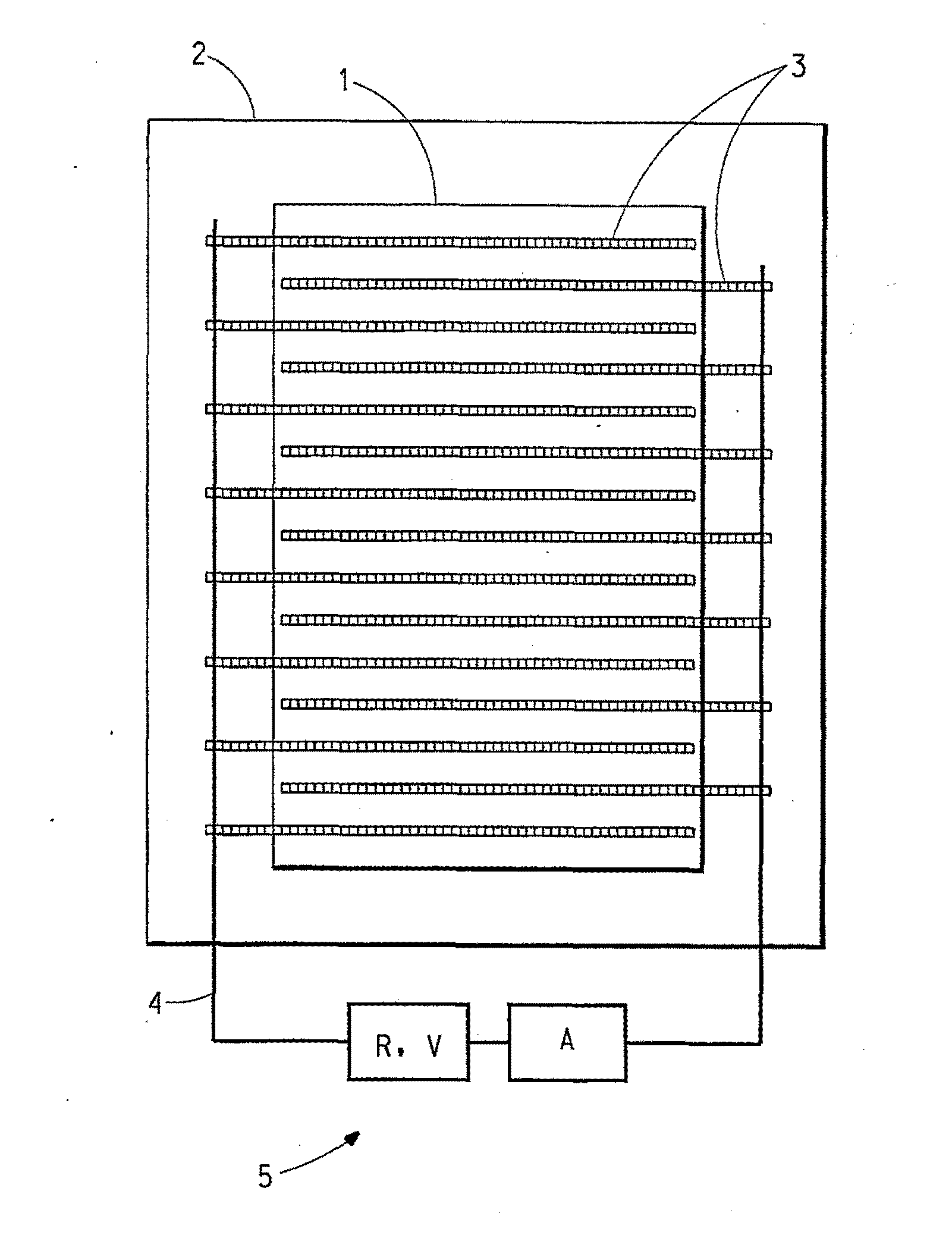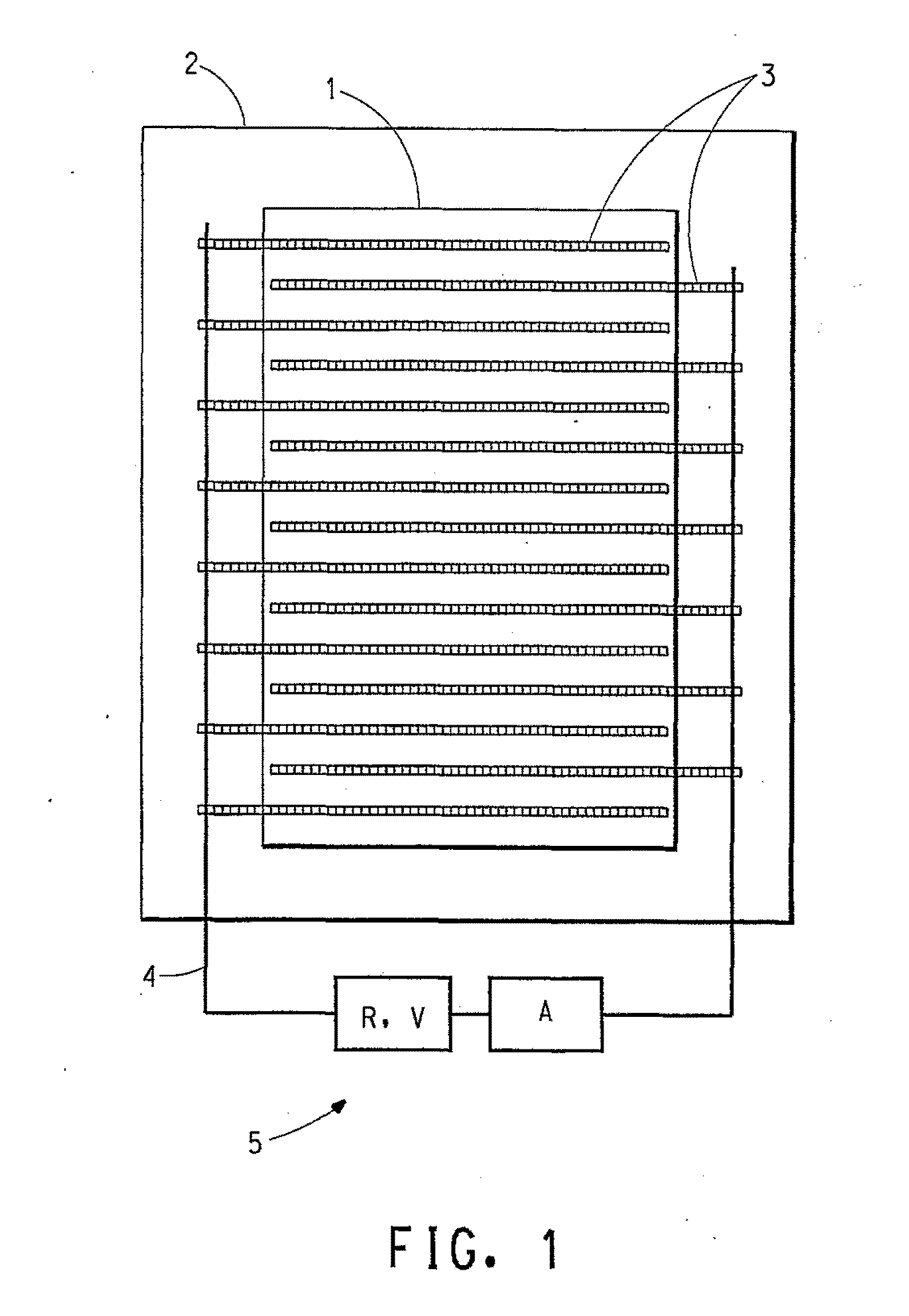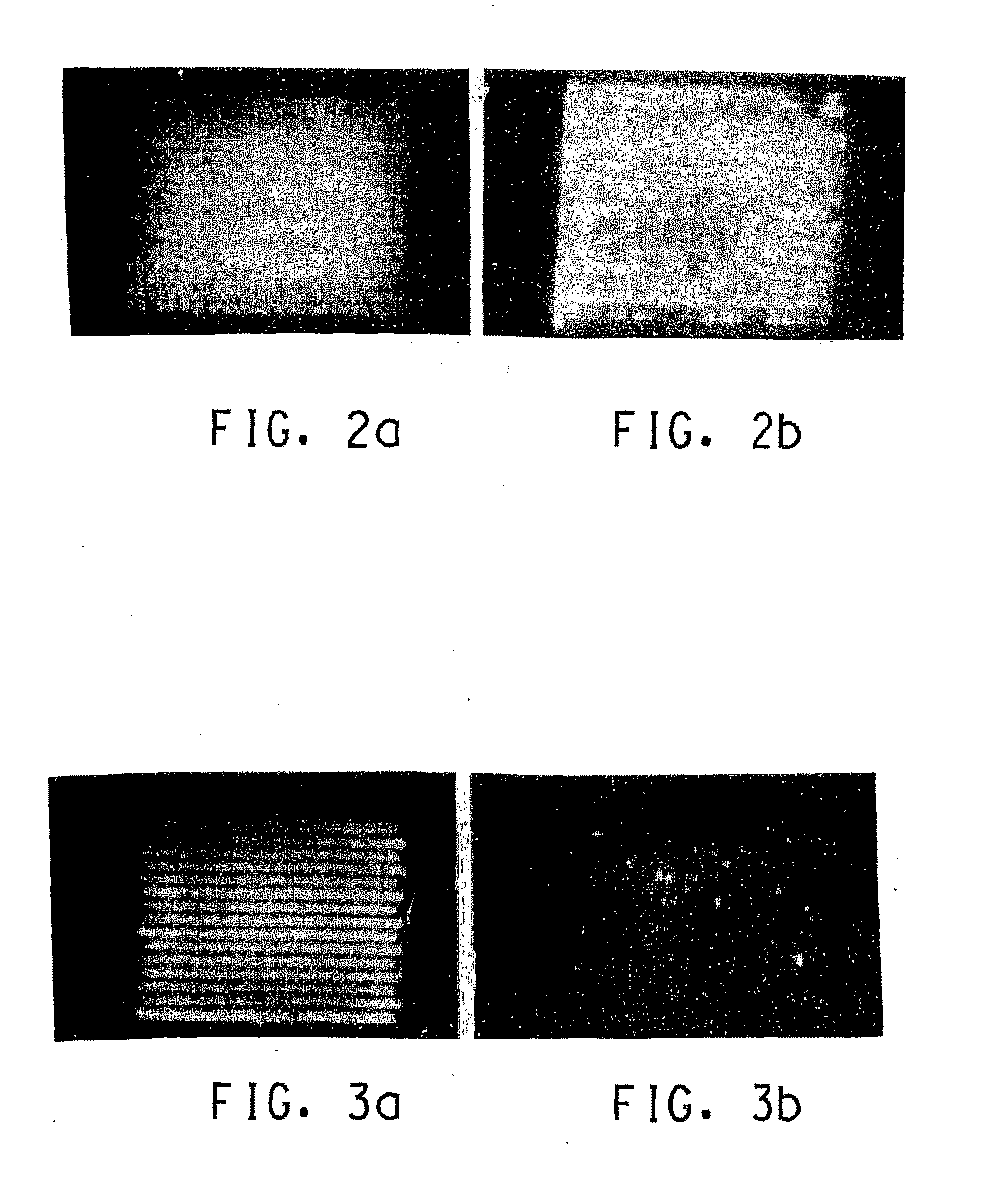Dielectric composition with reduced resistance
a technology of dielectric composition and resistance, which is applied in the manufacture of electrode systems, fixed capacitors, electric discharge tubes/lamps, etc., can solve the problems of uncontrollable charging induced emission and severely limit the anode voltage, and achieve the effect of reducing resistances
- Summary
- Abstract
- Description
- Claims
- Application Information
AI Technical Summary
Benefits of technology
Problems solved by technology
Method used
Image
Examples
examples 1-4
[0017]The purpose of these Examples was to compare various conductive oxides for the dielectric composition.
[0018]Four pastes were prepared using a bismuth-based dielectric frit and Cr2O3, V2O5, V2O3, and SnO2:Sb. The first three oxides were standard powder reagents. The antimony doped tin oxide, SnO2:Sb, was Zelec® ECP 3010-XC, which can be obtained from E. I. du Pont de Nemours and Company, Wilmington, Del.
[0019]The bismuth-based frit used in these Examples, Bi-frit, has the composition shown in Table I:
TABLE IIngredientWt %Bi2O371.8B2O313.2ZnO9.0Al2O33.0SiO22.0Na2O1.0
[0020]The four pastes were prepared with the compositions shown in Table II:
TABLE IIExampleExample.ExampleExampleIngredient1 Wt %2 Wt %3. Wt %4 Wt %Bi-frit66.066.066.066.0SnO2: Sb16.5NoneNoneNoneCr2O3None16.5NoneNoneV2O5NoneNone16.5NoneV2O3NoneNoneNone16.5Vehicle16.416.416.416.4Surfactant0.60.60.60.6Pigment0.50.50.50.5
[0021]The vehicle is a standard thick film paste ingredient consisting of a mixture of 10% ethylcell...
examples 5-11
Comparative Experiments A-C
[0024]These Examples and Comparative Experiments show the effects of various amounts of the conductive oxide SnO2:Sb in eliminating the charging of the dielectric and the resulting undesirable electron emission.
[0025]The paste of Example 1 was blended with a paste with the composition shown in Table IV:
TABLE IVIngredientWt %Bi-frit70.0SnO2: SbNoneVehicle29.0Surfactant0.5Pigment0.5
where the Bi-frit, vehicle, surfactant and pigment are identical to those used for the paste of Example 1. Ten different pastes were formed with SnO2:Sb content ranging from 0 to 10 wt % based on the total weight of the paste. The SnO2:Sb content of each Example and Comparative Experiment is shown in Table V below:
TABLE VIngredient Examplewt %or Comp. Exp.SnO2: SbResistanceChargingA0>200GΩExtensiveB2>200GΩExtensiveC3~200GΩSome53.5152GΩNone@3 kV63.7552GΩNone@3 kV743.3GΩNone@3 kV84.25236MΩNone@3 kV94.579MΩNone@3 kV10 533MΩNone@3 kV11 10136kΩNone@3 kV
[0026]The dielectric composition ...
PUM
| Property | Measurement | Unit |
|---|---|---|
| temperature | aaaaa | aaaaa |
| thick | aaaaa | aaaaa |
| resistance | aaaaa | aaaaa |
Abstract
Description
Claims
Application Information
 Login to View More
Login to View More - R&D
- Intellectual Property
- Life Sciences
- Materials
- Tech Scout
- Unparalleled Data Quality
- Higher Quality Content
- 60% Fewer Hallucinations
Browse by: Latest US Patents, China's latest patents, Technical Efficacy Thesaurus, Application Domain, Technology Topic, Popular Technical Reports.
© 2025 PatSnap. All rights reserved.Legal|Privacy policy|Modern Slavery Act Transparency Statement|Sitemap|About US| Contact US: help@patsnap.com



